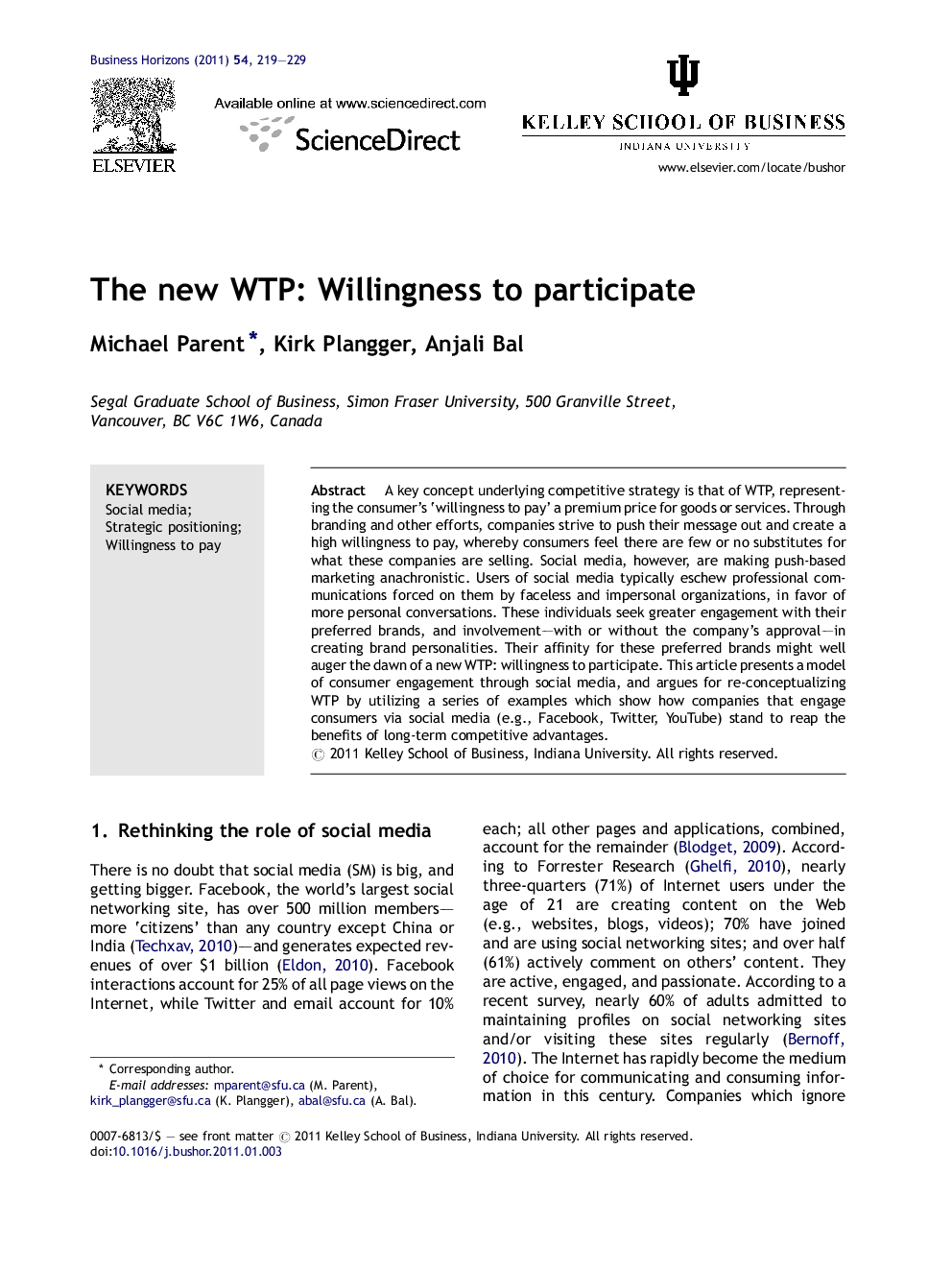| Article ID | Journal | Published Year | Pages | File Type |
|---|---|---|---|---|
| 1014187 | Business Horizons | 2011 | 11 Pages |
A key concept underlying competitive strategy is that of WTP, representing the consumer's ‘willingness to pay’ a premium price for goods or services. Through branding and other efforts, companies strive to push their message out and create a high willingness to pay, whereby consumers feel there are few or no substitutes for what these companies are selling. Social media, however, are making push-based marketing anachronistic. Users of social media typically eschew professional communications forced on them by faceless and impersonal organizations, in favor of more personal conversations. These individuals seek greater engagement with their preferred brands, and involvement—with or without the company's approval—in creating brand personalities. Their affinity for these preferred brands might well auger the dawn of a new WTP: willingness to participate. This article presents a model of consumer engagement through social media, and argues for re-conceptualizing WTP by utilizing a series of examples which show how companies that engage consumers via social media (e.g., Facebook, Twitter, YouTube) stand to reap the benefits of long-term competitive advantages.
